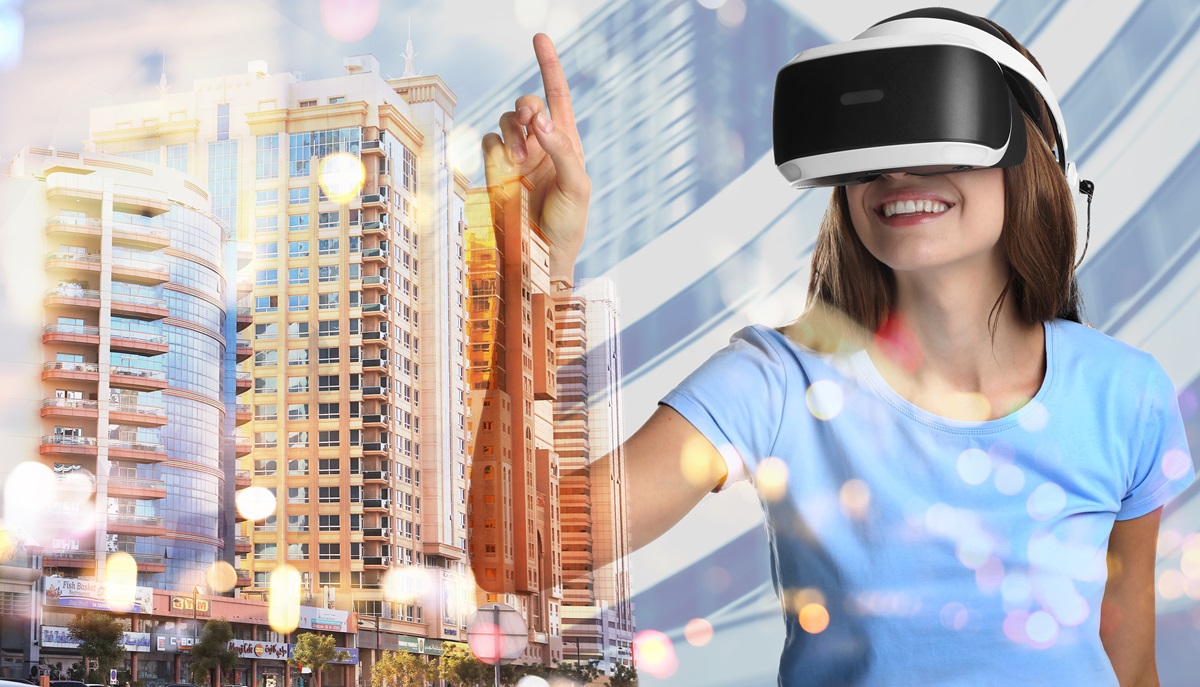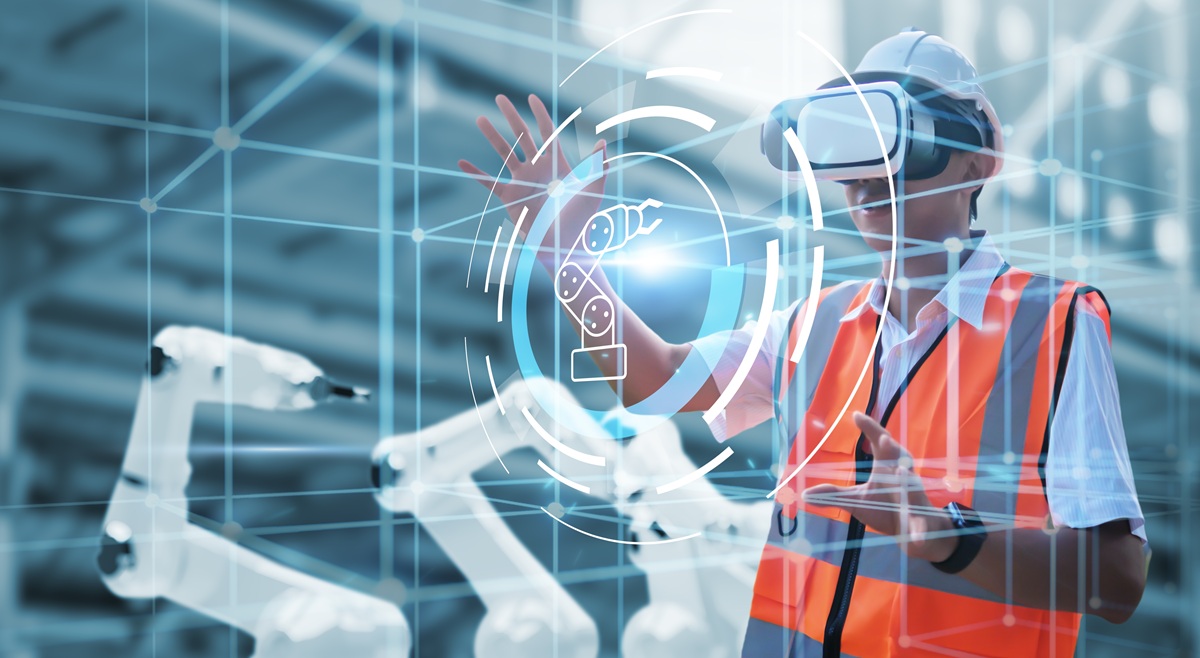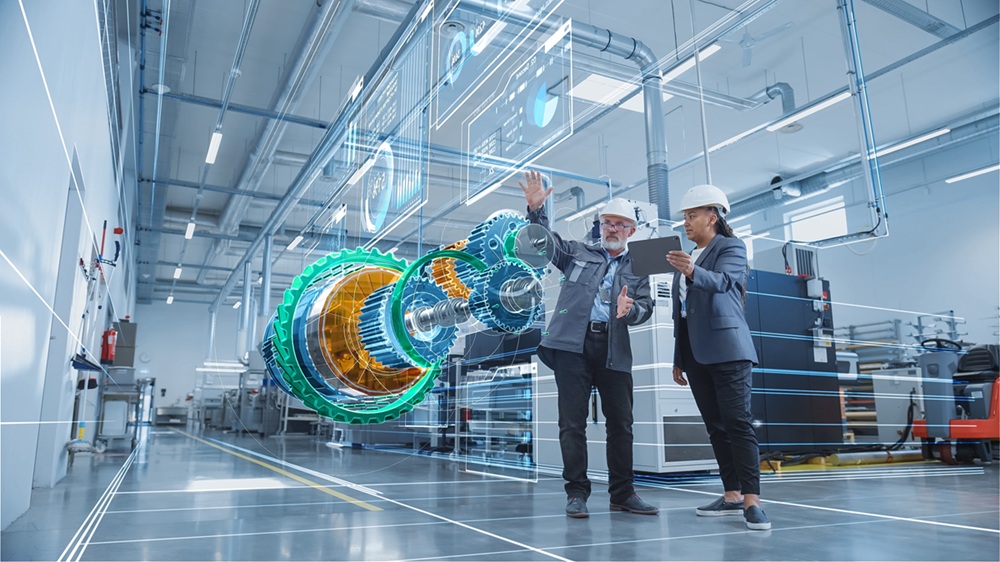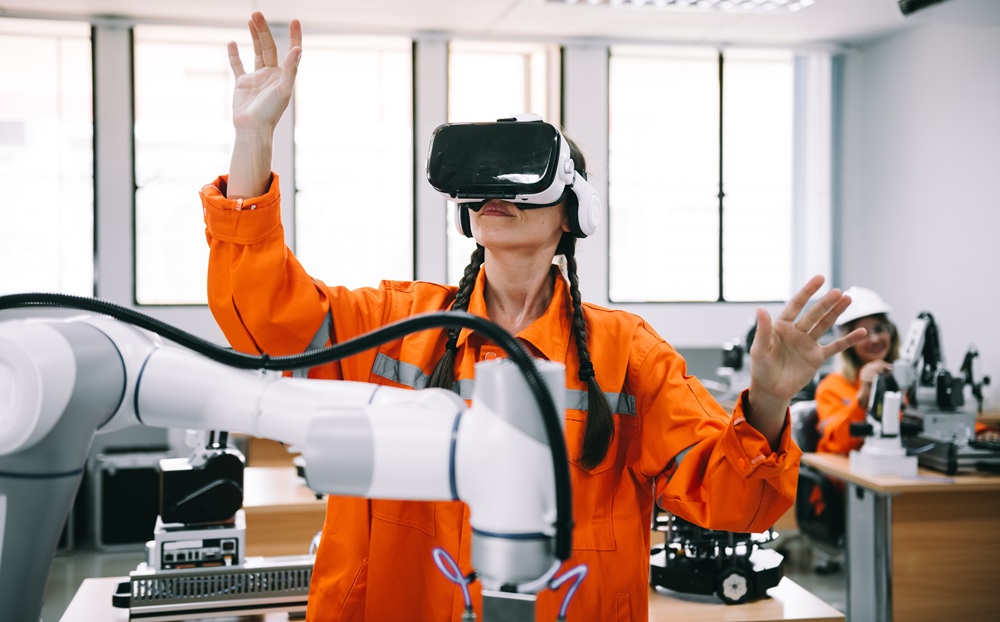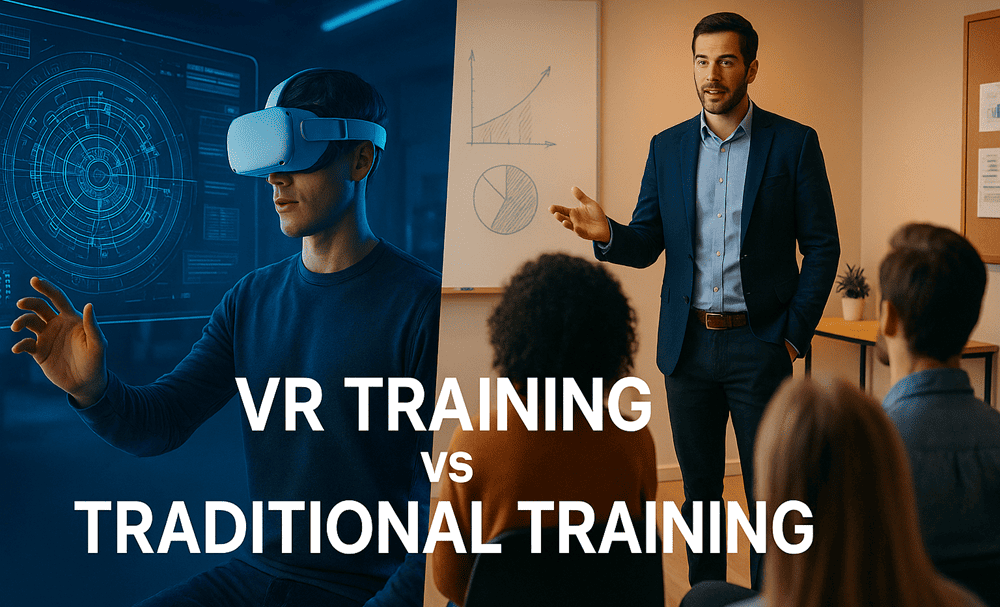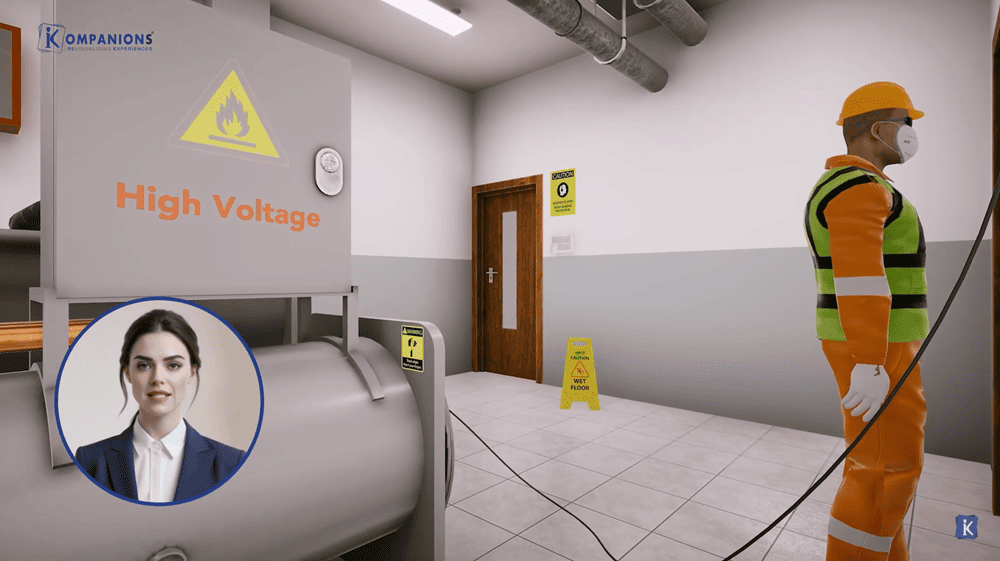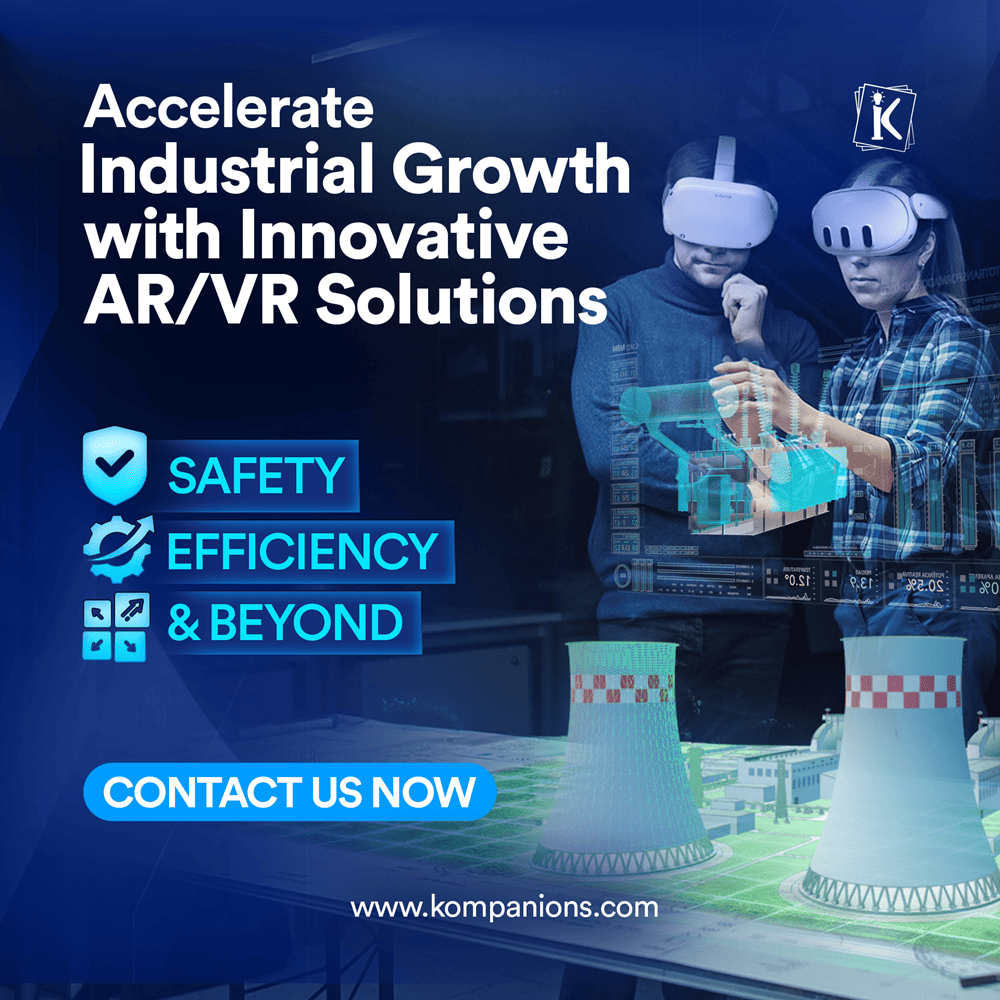
Article By: Robin Gupta
February 04, 2025 | 5 minutes to read | Updated On: 07 May 2025
VR in the Construction Industry: Boost Safety and Training
VR has made its mark in several industry areas, and the construction industry is no different. VR construction is changing training, safety, and project management. It does this through immersive, interactive digital environments.
The article discusses how adopting VR technology in construction affects safety and training and transforms the scenario.
Virtual Reality in the Construction Industry
The construction industry is flourishing with the integration of virtual reality. VR creates virtual environments that simulate real construction sites, boosting safety, productivity, and teamwork. It also enables managers and workers to simulate scenarios, recognize hazards, and plan projects.
Key statistics highlight the growing impact of VR in the construction sector:
- Experts predict that the global AR VR in the construction market will hit USD 150 billion by 2030.
- The study says that VR construction training cuts workplace accidents by 30%.
- VR construction site planning has boosted project efficiency by up to 25%. It has saved time and resources.
Applications of VR in Construction
VR is revolutionizing the construction industry by providing innovative solutions for design, safety, and project management. By creating immersive, interactive experiences, VR allows architects, engineers, and workers to visualize and simulate real-world scenarios before construction begins, improving decision-making and minimizing risks. Here are some key applications:
1. Safety Training
VR safety training immerses workers in realistic simulations, where they can experience hazardous environments without real-world risks.
This allows them to practice responding to dangerous situations, such as equipment malfunctions or fire outbreaks, ensuring they are better prepared for real-life emergencies, reducing accidents and improving overall safety.
2. Design and Planning
VR enables architects and engineers to walk through 3D models of construction projects before physical work begins. This application helps identify design flaws, optimize layouts, and visualize complex structures from multiple angles.
By experiencing the design firsthand, teams can make more informed decisions and improve the overall quality of the project.
3. Project Management
With VR, project managers can monitor the progress of a construction site remotely. By accessing virtual models and visualizing real-time data, managers can track project milestones, identify delays, and ensure resources are being utilized efficiently.
This application improves communication and collaboration among stakeholders and enhances project execution.
Enhancing Safety in Construction with VR
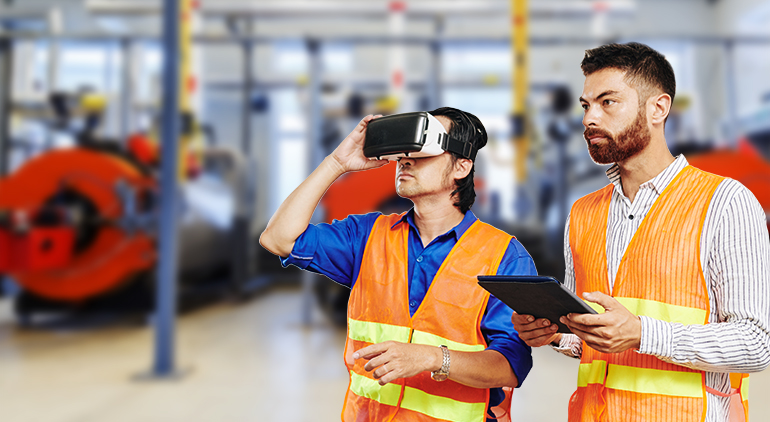
Construction workers are highly prone to the maximum risk of accidents. VR-powered safety solution is a new approach to reducing risks. It provides realistic simulations of dangerous situations.
Key Benefits of VR Construction Safety:
1. Hazard Identification: Workers can simulate potential hazards in a controlled VR environment, including equipment malfunctions and structural collapses.
2. Emergency Preparedness: VR construction simulators train workers for emergencies, such as fires or chemical spills, boosting their readiness and confidence.
3. Minimized On-Site Risks: Virtual safety training reduces accident risks on sites.
Revolutionizing Training with VR Construction
Traditional training in construction is almost always conducted through either classroom sessions or mere shadowing on-site. This becomes very expensive, time-consuming, and limited in scope. VR construction training is a dynamic alternative. It offers hands-on learning in immersive virtual environments.
Advantages of VR Training:
1. Interactive Learning: Workers can engage with realistic simulations, enhancing retention and understanding.
2. Scenario Variety: VR lets trainees face diverse situations, from routine tasks to rare emergencies.
3. Cost Efficiency: VR cuts training costs by reducing the need for physical materials and equipment.
Industries Benefiting from Enterprise VR Solutions:
Real Estate Development: Builders and architects use VR to visualize and plan real estate projects more efficiently.
Manufacturing: Technologies like HoloLens in manufacturing support assembly line training and facility design.

Construction: BIM and VR in construction enhance collaboration and training across teams.
Incorporation of BIM and Virtual Reality in the Construction Industry
BIM and VR use immersive tech to merge digital models, improving communication, visualization, and decision-making in construction.
Applications:
Design Validation: Virtual models can make stakeholders "walk through" before construction to identify design flaws.
Enhanced Teamwork: Contractors, architects, and engineers can collaborate in real time in a virtual space.
Digital Twins: BIM and digital twins offer real-time data. It enables monitoring and maintaining construction projects.
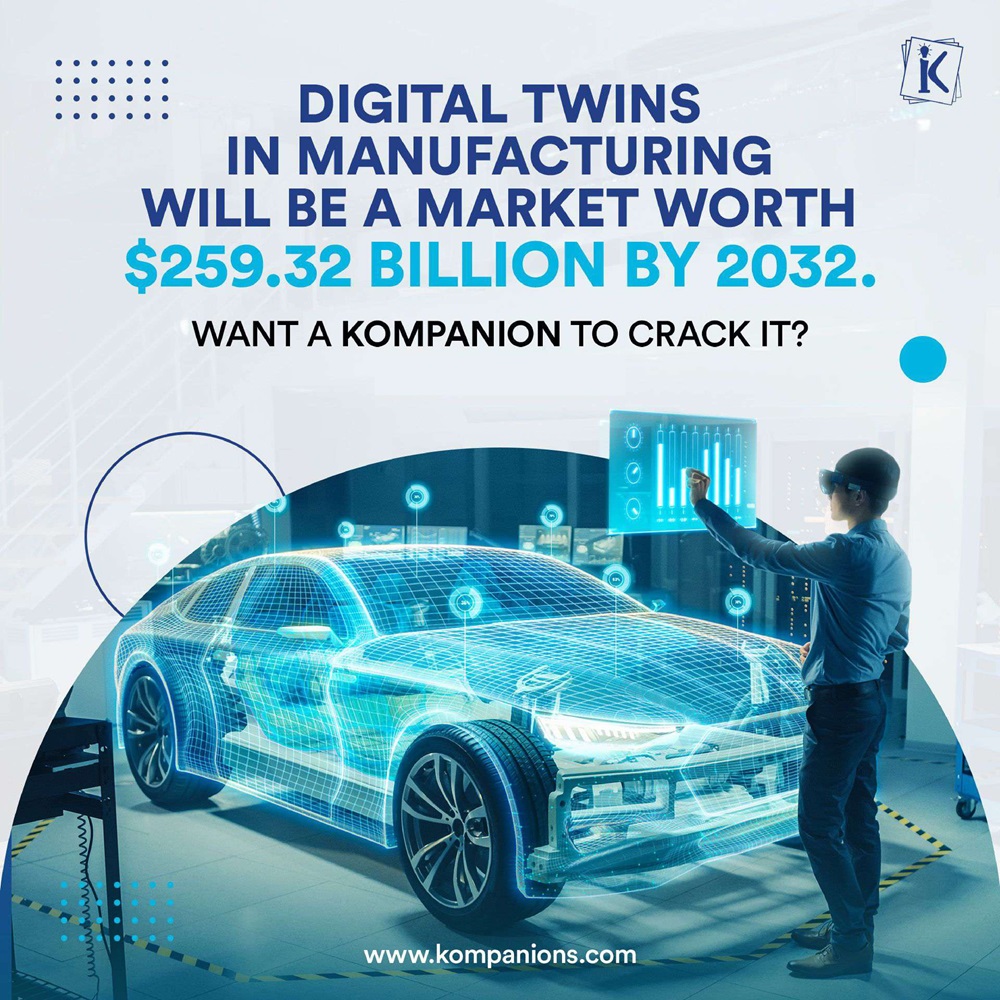
Key VR Solutions for Construction Companies
Several XR solutions and VR tools are boosting VR use in construction.
Construction Simulator VR: Platforms like SimLab VR train users to operate heavy machinery. They are very realistic.
VR Software for Construction: Tools like Unity Reflect integrate with BIM apps. They create immersive visualizations.
Mixed Reality Benefits: Merging VR with augmented reality (AR) boosts real-world uses. For example, it can overlay 3D models onto construction sites.
Challenges and Future of Virtual Reality in Construction
While the benefits of VR technology in construction are evident, challenges remain:
High Initial Costs: VR construction solutions require a big investment in hardware and software.
Skill Gaps: Workers and managers need training to effectively use VR tools.
Scalability: Adapting VR for diverse projects and team sizes can be complex.
However, the future of virtual reality in construction is promising. As costs fall and tech improves, enterprise VR and mixed reality will be widely adopted, further transforming the industry.
Let's summarize all the possibilities VR can bring to the construction industry.
Virtual reality can help to overcome a lot of challenges in the construction industry.
Virtual Reality in Construction can:
1. Save time and money.
By allowing a better pre-planning stage, where it is possible to explore a 3D model in VR, you can reduce rework associated with issues that are hard to predict or arise from misunderstandings.
2. Improve training safety.
In virtual reality, workers can make as many mistakes as they need to master dangerous equipment without getting hurt or damaging the machinery.
3. Enhance collaboration.
Even if hundreds of miles separate the project team, they can all gather in a virtual conference room to discuss any important questions.
4. Allow for better timeliness.
Sometimes, changes agreed upon during construction might take from a day to several weeks to implement. Because there are fewer such alterations, it is easier to estimate deadlines.
Also, thanks to VR streaming via 3D cameras, managers can monitor the building process more effectively.
5. Increase quality.
Virtual reality offers a common spatial experience that leads to better decision-making. Because there are almost no misinterpretations, the quality instantly goes up, and the number of "redo" requests drops significantly.
Discover how VR solutions can reduce risks, cut costs, and boost productivity.
Unlock Your AdvantageChallenges in VR Construction:
Below are a few challenges of VR adoption in the construction industry.
1. High Initial Costs
One of the main barriers to VR adoption in construction is the high cost of hardware and software. Specialized equipment like VR headsets, motion trackers, and high-performance computers can be expensive, limiting access for smaller companies.
2. Learning Curve
The complexity of VR technology requires extensive training for workers and project managers. Adapting to VR workflows can be time-consuming and costly, and resistance to new methods can further hinder adoption.
3. Data Interoperability
Construction projects involve multiple stakeholders using different software systems. Ensuring seamless integration of VR tools with existing design and project management systems is critical for avoiding data discrepancies and inefficiencies.
4. Limitations in Real-World Simulation
While VR can simulate many construction scenarios, it still struggles to replicate the complexities of real-world environments, such as unpredictable weather or unforeseen challenges, which can impact decision-making.
Future Trends of VR in Construction
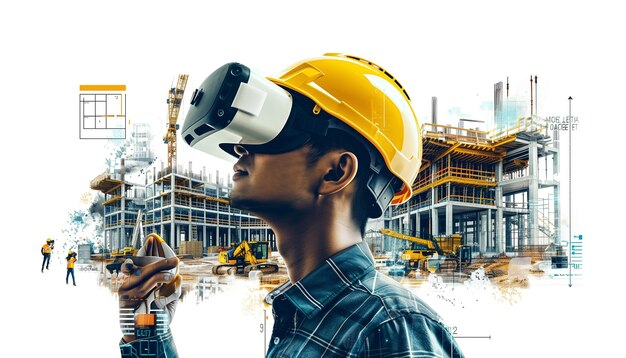
The future of VR in construction is bright, with emerging technologies set to revolutionize the industry. From enhanced safety training to seamless collaboration, VR will continue to drive efficiency and innovation in construction projects worldwide.
1. Integration with AR and AI
Combining VR with Augmented Reality (AR) and Artificial Intelligence (AI) will enhance construction workflows. AR can overlay virtual elements onto physical spaces, while AI can optimize designs and predict potential issues, improving efficiency.
2. Affordable and Accessible Solutions
As VR hardware becomes more affordable and easier to use, smaller construction firms will gain better access to the technology. Lighter, cost-effective headsets will reduce the learning curve, accelerating adoption.
3. Cloud-Based Platforms
Cloud-based VR platforms will allow real-time collaboration across multiple stakeholders, enhancing communication, reducing errors, and improving coordination on construction projects.
4. Expanded Use in Safety Training
VR will see greater use in safety training, providing workers with risk-free environments to practice handling hazardous situations. This trend will improve safety and reduce accidents on construction sites.
5. Holistic VR Integration
As VR becomes integrated into every phase of a construction project—from design to post-project evaluation—it will optimize efficiency, reduce costs, and improve the overall quality and safety of construction projects.
A few more:
- Increased use of HoloLens in manufacturing and construction for on-site problem-solving.
- Integration of VR for B2B industries with AI and IoT for smarter project management.
- Growth of VR construction training programs in vocational schools and universities.
Conclusion
Virtual reality in construction is a new era of safety, efficiency, and innovation. VR technology is essential for improving safety and skills in construction. Simulations help reduce accidents at work. It also enhances skills with a VR construction simulator.
With advances in BIM, VR, and other XR solutions, the future of construction is bright. As companies adopt VR in construction, they will boost safety and training. They will also unlock new levels of productivity and collaboration.
Investing in VR solutions for construction can give businesses an edge in a competitive industry. They can use mixed reality, BIM, and digital twins for construction projects. The time to embrace virtual reality in construction safety is now.

